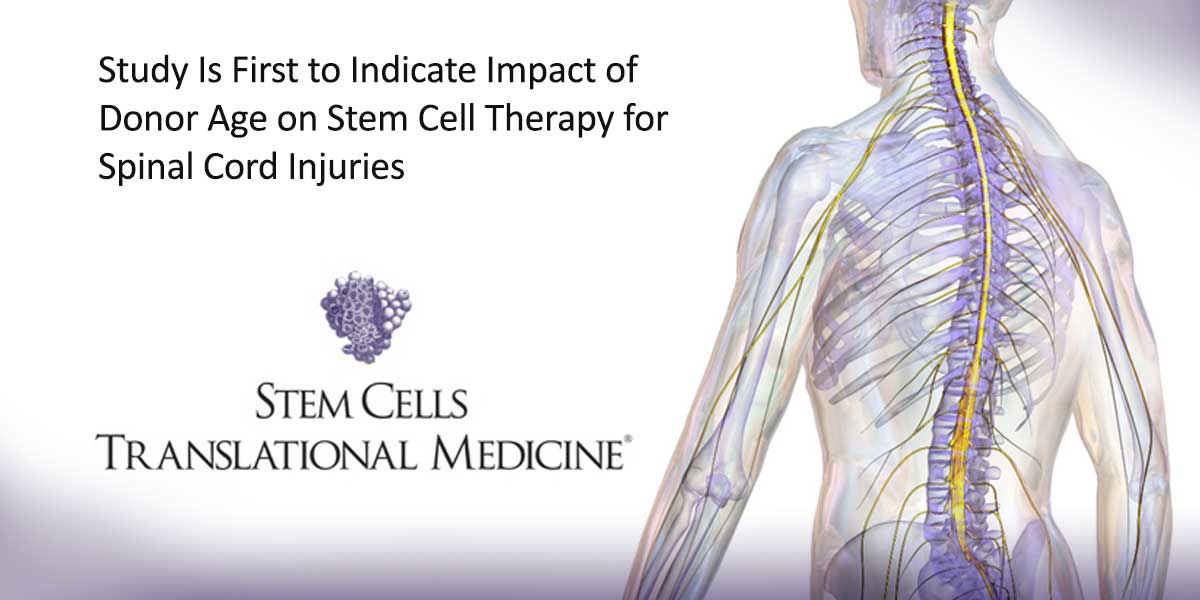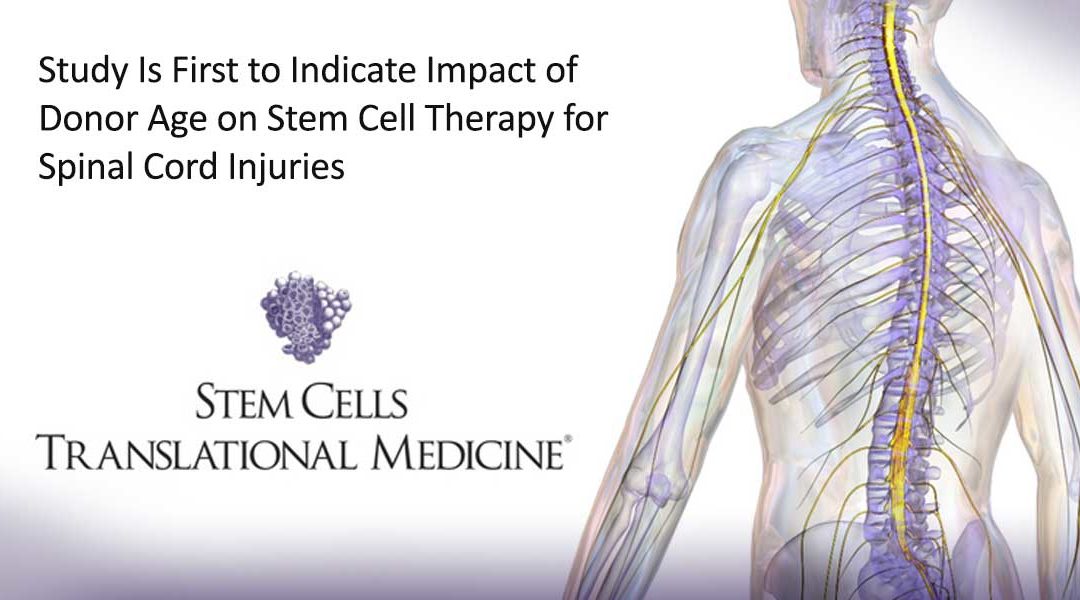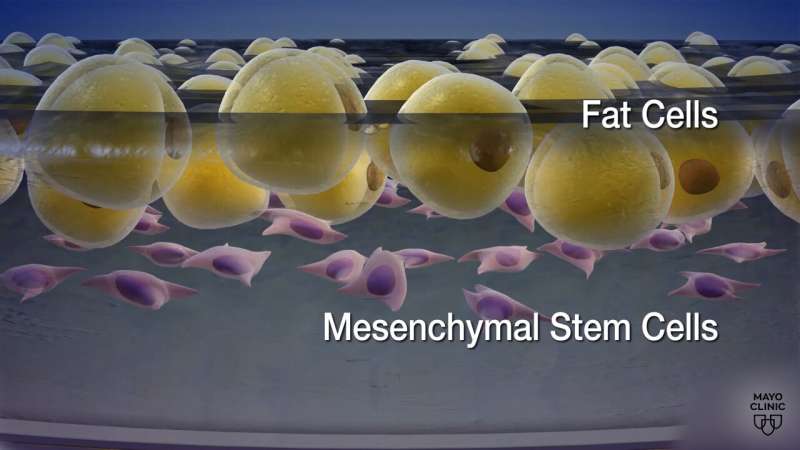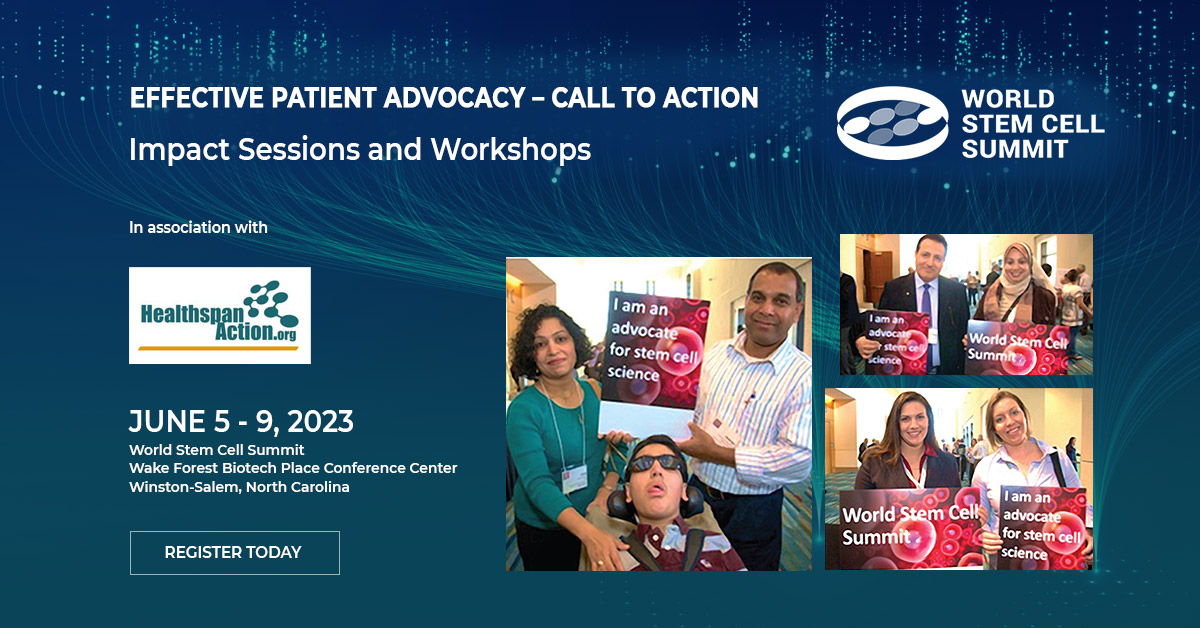
DURHAM, N.C., March 26, 2019 /PRNewswire-PRWeb/ — The potential for stem cells to reduce damage, regenerate tissue and promote functional recovery after a spinal cord injury (SCI) is being tested in several ongoing clinical trials. However, a new study released today in STEM CELLS Translational Medicine (SCTM) indicates that donor age-dependent stem cell therapy could help optimize cell treatment strategies for clinical translation.
“To our knowledge, this is the first study to compare mesenchymal stromal cells derived from different donor ages and sources, and the first to identify similarities and differences between how these cells affect tissue regeneration and key functional parameters after a traumatic SCI,” said Michael Fehlings, M.D., Ph.D. Dr. Fehlings led the team of investigators from the University of Toronto and Krembil Research Institute, University Health Network in conducting the study.
Every year as many as 500,000 people worldwide suffer a SCI, according to the World Health Organization. Damage to the circulatory system after such an injury can trigger a cascade of secondary events, including inflammation and scarring. Mesenchymal stromal cells (MSCs) — which are stem cells isolated from bone marrow, adipose and other adult tissue sources, as well as the umbilical cord, that can differentiate into a variety of cells types — also possess characteristics common to pericytes (cells that support blood vessel integrity). These features add up to make MSCs ideal candidates for treating SCI. As such, several clinical trials are currently underway testing how infusions of bone marrow-derived stem cells (BMSCs) affect SCI.
What was not being investigated until the study reported on in SCTM, however, is whether the age of the cell donor can have an impact on treatment outcome. Clifford Librach, M.D., FRCS(C), also a professor at the University of Toronto, whose team did the pioneering work on the use of early pregnancy umbilical cord-derived human umbilical perivascular cells (HUCPVCs) for regenerative therapy, approached Dr. Fehlings with the novel idea to use these cells in his rodent model of SCI. This developed into a unique collaboration between a reproductive biologist and a neurosurgeon/neuroscientist. On this project Dr. Fehlings’ team tackled this question using HUCPVCs collected at two different stages – full-term and first trimester, provided by Dr. Librach’s team. They then compared them to adult BMSCs and a control vehicle. The team chose HUCPVCs for their study as they tend to exhibit greater proliferative potential in culture and, once implanted, have better rates of survival, migration and integration with the host’s central nervous system than BMSCs.
The team conducted their test on adult rats, starting the cell infusions an hour after the animals had undergone a spinal cord injury. The results, taken 10 weeks later, showed that the younger the cell source, the better the outcome. Both HUCPVC age groups outperformed the BMSCs and the control.
“By examining the effects of donor cell age and source, this study brings us closer to understanding the ways in which mesenchymal stromal cells work to improve outcome after spinal cord injury and maximising their therapeutic potential.” said Reaz Vawda, Ph.D., co-author of the study.
When it came to reducing neurovascular disruption, astrogliosis and scarring, the first trimester HUCPVCs slightly outperformed the full term HUCPVCs. “As far as improving the animals’ functional ability, the first trimester HUCPVC was the only cell type that resulted in lasting chronic effects in forelimb function and weight gain,” said Dr. Librach.
“This study demonstrates a clear age-related difference in cell efficacy after SCI, with first trimester cells outperforming term cells,” Dr. Fehlings reported. “Additionally, we applied an innovative ultrasound technique to accurately measure acute lesional volume and, later, cavitation (whereby a SCI can expand in size leading to a scar-encapsulated cavity many times the size of the initial injury) in live animals.
“Together, this minimally invasive and effective approach to cell therapy has significant implications on the treatment of traumatic cervical SCI and other central nervous system injuries,” he added. “These results can help to optimize cell treatment strategies for eventual use in humans.”
“Outcomes from this first-of-its-kind study are advancing what we already know about mesenchymal stromal cells and their healing potential for traumatic spinal cord injury by comparing different donor ages and sources, providing new information about their therapeutic efficacy,” said Anthony Atala, M.D., Editor-in-Chief of STEM CELLS Translational Medicine and director of the Wake Forest Institute for Regenerative Medicine. “We look forward to seeing how these results impact treatment strategies for clinical translation to ultimately help the half million people worldwide who suffer this type of injury.”
###
The full article, “Early intravenous infusion of mesenchymal stromal cells exerts a tissue source age-dependent beneficial effect on neurovascular integrity and neurobehavioural recovery after traumatic cervical spinal cord injury,” can be accessed at https://stemcellsjournals.onlinelibrary.wiley.com/doi/abs/10.1002/sctm.18-0192.
About STEM CELLS Translational Medicine: STEM CELLS Translational Medicine (SCTM), co-published by AlphaMed Press and Wiley, is a monthly peer-reviewed publication dedicated to significantly advancing the clinical utilization of stem cell molecular and cellular biology. By bridging stem cell research and clinical trials, SCTM will help move applications of these critical investigations closer to accepted best practices. SCTM is the official journal partner of Regenerative Medicine Foundation.
About AlphaMed Press: Established in 1983, AlphaMed Press with offices in Durham, NC, San Francisco, CA, and Belfast, Northern Ireland, publishes two other internationally renowned peer-reviewed journals: STEM CELLS® (http://www.StemCells.com), celebrating its 37th year, is the world’s first journal devoted to this fast paced field of research. The Oncologist® (http://www.TheOncologist.com), also a monthly peer-reviewed publication, entering its 24th year, is devoted to community and hospital-based oncologists and physicians entrusted with cancer patient care. All three journals are premier periodicals with globally recognized editorial boards dedicated to advancing knowledge and education in their focused disciplines.
About Wiley: Wiley, a global company, helps people and organizations develop the skills and knowledge they need to succeed. Our online scientific, technical, medical and scholarly journals, combined with our digital learning, assessment and certification solutions, help universities, learned societies, businesses, governments and individuals increase the academic and professional impact of their work. For more than 200 years, we have delivered consistent performance to our stakeholders. The company’s website can be accessed at http://www.wiley.com.
About Regenerative Medicine Foundation (RMF): The non-profit Regenerative Medicine Foundation fosters strategic collaborations to accelerate the development of regenerative medicine to improve health and deliver cures. RMF pursues its mission by producing its flagship World Stem Cell Summit, honouring leaders through the Stem Cell and Regenerative Medicine Action Awards, and promoting educational initiatives.




